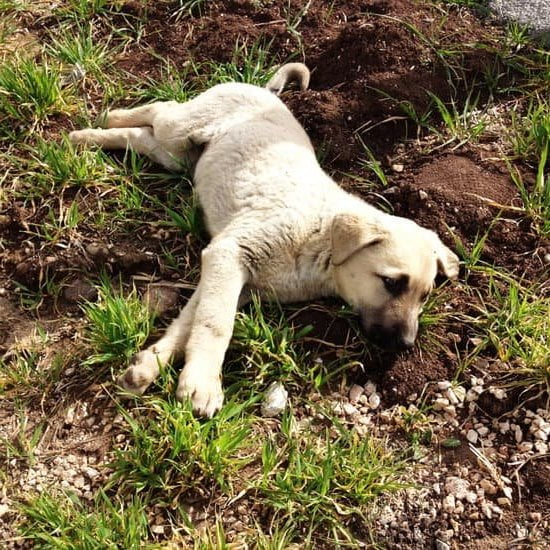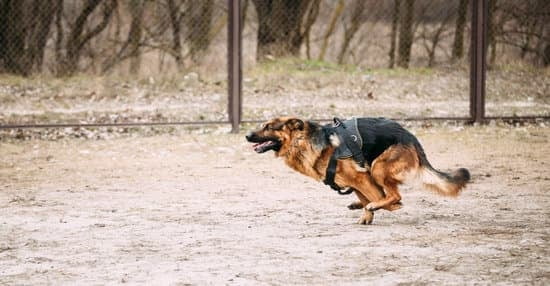Are puppy training pads toxic to dogs? Puppy training pads serve a crucial purpose in helping pet owners house train their puppies, providing a convenient solution for indoor potty training.
However, concerns have been raised about the safety of these pads and whether they may pose a health risk to dogs. This article will explore the composition of puppy training pads, potential chemicals and toxins they may contain, the impact of toxicity on dogs, and alternative safe training methods for pet owners to consider.
Puppy training pads are designed to absorb urine and minimize messes inside the home during the early stages of dog ownership. They offer convenience and flexibility for pet owners who may not have immediate access to outdoor spaces for potty breaks or have limited time for regular walks. However, it is important to examine whether the materials used in these pads are safe for our furry friends, as their well-being is of utmost concern.
In this article, we will delve into the composition of puppy training pads and investigate any potential chemicals and toxins that could be harmful to dogs. Understanding these factors can help pet owners make informed decisions about their use and explore alternative methods that prioritize the health and safety of their pets.
Additionally, we will provide tips for choosing non-toxic puppy training pads and consider their environmental impact. Stay tuned as we explore responsible pet ownership and safe training choices for our beloved canine companions.
The Composition of Puppy Training Pads
Puppy training pads are a popular choice for pet owners who want to train their young dogs to urinate and defecate in a specific area of the house. These pads are designed to absorb and contain liquid waste, making them a convenient option for indoor potty training. However, it is important for pet owners to understand the composition of puppy training pads and whether they are safe for their dogs.
The composition of puppy training pads can vary depending on the brand and type of pad. Some common materials used in the production of these pads include plastic, polymer gels, and cellulose fibers. While these materials are generally considered safe for use around pets, there has been some concern over potential chemicals and toxins present in certain types of puppy training pads.
Potential Chemicals and Toxins in Puppy Training Pads:
- Polymer gels: Some puppy training pads contain super-absorbent polymer gels that are designed to quickly absorb liquid waste. However, there have been reports of dogs ingesting these gels, which can lead to gastrointestinal blockages and other health issues.
- Artificial fragrances: Certain puppy training pads may be treated with artificial fragrances to help mask odors. These fragrances can potentially irritate a dog’s respiratory system or cause allergic reactions.
- Chemical dyes: The use of chemical dyes in some puppy training pads can also be a concern, as these dyes may contain toxic substances that can be harmful if ingested by dogs.
It is important for pet owners to carefully read the labels and product information when choosing puppy training pads for their dogs. Opting for non-toxic and eco-friendly options can help reduce the risk of exposure to harmful chemicals and toxins.
Consider alternatives such as reusable washable pee pads or grass potty patches as safer options for indoor potty training. Additionally, closely monitoring your dog during potty time can help prevent any incidents related to ingesting or coming into contact with potentially toxic materials.
Potential Chemicals and Toxins in Puppy Training Pads
Puppy training pads are a convenient tool for potty training your furry friend, but pet owners may wonder about the safety of these products. Many puppy training pads are made with various chemicals and materials that can potentially be harmful to dogs. Understanding the potential chemicals and toxins in puppy training pads is essential for ensuring the health and well-being of your pet.
One common concern among pet owners is the use of phthalates in puppy training pads. Phthalates are a group of chemicals used to soften and increase the flexibility of plastics, and they are often found in products such as puppy training pads. Exposure to phthalates can have adverse effects on a dog’s health, including hormonal disruptions, reproductive issues, and respiratory problems.
In addition to phthalates, some puppy training pads may also contain dyes, artificial fragrances, and other chemical additives that can be harmful to dogs. These chemicals can cause skin irritations, allergic reactions, and respiratory issues when inhaled or ingested by dogs. It’s important for pet owners to carefully examine the ingredients and materials used in puppy training pads to ensure that they are safe for their pets.
| Potential Chemicals and Toxins | Impact on Dogs |
|---|---|
| Phthalates | Hormonal disruptions, reproductive issues, respiratory problems |
| Dyes, artificial fragrances | Skin irritations, allergic reactions, respiratory issues |
The Impact of Toxicity on Dogs
Puppy training pads are a popular choice for pet owners who are looking to house train their dogs. However, there is growing concern about the potential toxicity of these pads and the impact they can have on the health of our pets. It’s important to understand the potential symptoms and health risks associated with using toxic puppy training pads.
Some of the potential symptoms of toxicity in dogs from exposure to harmful chemicals in puppy training pads include:
- Skin irritation and allergic reactions
- Respiratory issues such as coughing or difficulty breathing
- Gastrointestinal upset including vomiting and diarrhea
In addition to these immediate symptoms, long-term exposure to toxic substances in puppy training pads can lead to more serious health risks for dogs. These can include organ damage, cancer, and reproductive issues. It’s crucial for pet owners to be aware of these potential dangers and take steps to minimize the risk to their beloved pets.
To ensure the safety and well-being of your dog, it’s essential to choose non-toxic puppy training pads that are free from harmful chemicals and toxins. Look for products that are made from natural and biodegradable materials, as these options are less likely to pose a risk to your pet’s health.
It’s also important to monitor your dog for any signs of discomfort or illness when using training pads, and consult with a veterinarian if you have any concerns about potential toxicity.
Alternatives to Puppy Training Pads
Puppy training pads are a popular choice for pet owners who are looking to potty train their new furry friends. However, some pet owners may have concerns about the safety of these pads and whether they contain any harmful chemicals or toxins. In this section, we will explore some safe and effective alternatives to puppy training pads that will help pet owners make informed decisions when it comes to training their dogs.
Outdoor Training: Embracing Nature
One of the most effective alternatives to using puppy training pads is outdoor training. Allowing your puppy to go potty outside in a designated area not only reinforces natural behavior but also provides an opportunity for exercise and fresh air. This method requires consistency, patience, and positive reinforcement from the pet owner. Gradually increasing the time spent outdoors and praising your puppy for their successful potty breaks can lead to successful outdoor potty training.
Crate Training: Creating a Safe Space
Crate training is another safe and effective alternative to using puppy training pads. By utilizing a crate, puppies can learn bladder control and establish a den-like environment that they naturally want to keep clean. It’s important for pet owners to introduce their puppies to the crate gradually and make it a comfortable and positive space for them. Crate training also helps prevent accidents inside the house and teaches puppies to hold their bladders until they are taken outside.
Bell Training: Teaching Communication
Bell training can be an excellent alternative for pet owners who prefer not to use puppy training pads. This method involves teaching puppies how to signal when they need to go outside by ringing a bell attached near the door. Through positive reinforcement, such as treats or praise, puppies can quickly learn how to communicate their need to go outside without relying on training pads.
By exploring these safe and effective alternatives, pet owners can make informed decisions about their dog’s potty training without having to rely on potentially harmful puppy training pads. It’s essential for pet owners to choose methods that prioritize the well-being of their pets while also promoting responsible pet ownership.
How to Choose Non-Toxic Puppy Training Pads
When looking for non-toxic puppy training pads, there are a few key factors that pet owners should consider to ensure the safety and well-being of their dogs. Firstly, it is important to carefully read the label and packaging of the puppy training pads to identify any potential harmful chemicals or toxins. Look for pads that are labeled as free from phthalates, BPA, and other harmful substances.
In addition to checking for harmful chemicals, pet owners should also look for puppy training pads that are made from natural and sustainable materials. Opt for pads that are biodegradable or compostable, as these options are not only better for the environment but also safer for your dog. Bamboo fiber and grass pulp are examples of eco-friendly materials that can be used in non-toxic puppy training pads.
Furthermore, consider the absorbency and leak-proof features of the puppy training pads. Higher quality pads with advanced absorbent technology not only provide better odor control and moisture locking but also reduce the risk of accidental ingestion of toxic substances by your dog. It is important to choose a pad that can effectively contain messes without exposing your pet to potential hazards.
It’s also worth reaching out to other pet owners or seeking recommendations from veterinarians or animal experts when choosing non-toxic puppy training pads. Feedback from experienced individuals can help you make an informed decision about the safest and most effective options available on the market.
| Factor | Consideration |
|---|---|
| Harmful Chemicals | Look for pads free from phthalates, BPA, and other harmful substances |
| Materials | Choose pads made from natural and sustainable materials such as bamboo fiber or grass pulp |
| Absorbency | Look for high-quality pads with advanced absorbent technology |
Environmental Impact
Puppy training pads are a popular tool for pet owners looking to house train their new furry family members. However, beyond their impact on the health of dogs, it is also important to consider the environmental implications of using puppy training pads. As pet owners, it is our responsibility to choose products that are not only safe for our pets but also do not harm the environment.
Composition and Decomposition
Puppy training pads are often made of multiple layers, with an absorbent layer to lock in moisture and prevent leaks. Many of these pads also have a waterproof backing to protect floors from accidents. While these features make them effective for their intended use, they can pose challenges when it comes to decomposition. The plastic backing and synthetic materials used in some puppy training pads may take a long time to break down in landfills, contributing to environmental pollution.
Biodegradable Options
In recent years, there has been a growing awareness of the environmental impact of pet products, including puppy training pads. As a result, there are now biodegradable options available on the market. These pads are designed to break down more quickly in landfills, reducing their long-term impact on the environment. Pet owners concerned about eco-friendliness should consider choosing biodegradable puppy training pads as a more sustainable option.
Reusable Alternatives
Another eco-friendly alternative to traditional disposable puppy training pads is reusable washable pads. These can be laundered and used multiple times, reducing waste and minimizing the environmental footprint associated with disposable options. While there may be an upfront investment in purchasing reusable pads, they can ultimately save money and reduce waste over time, making them a practical and environmentally conscious choice for pet owners.
Overall, when considering the environmental impact of using puppy training pads, pet owners should look for biodegradable or reusable options as more eco-friendly alternatives to traditional disposable pads. Making informed choices about the products we use for our pets can help minimize our environmental impact while still effectively meeting the needs of our furry friends.
Conclusion
In conclusion, it is crucial for pet owners to prioritize the health and safety of their dogs when considering puppy training pads. While there is a concern about potential chemicals and toxins in some puppy training pads, there are also safe and non-toxic options available on the market. It is essential for pet owners to be aware of the composition of the training pads they choose and to opt for those that are free from harmful substances.
When considering the impact of toxicity on dogs, it is important to recognize the potential symptoms and health risks associated with exposure to harmful chemicals. Responsible pet ownership involves ensuring that training methods and products used are not only effective but also safe for the well-being of the dog. Being mindful of the potential environmental impact of puppy training pads is also an important aspect of responsible pet ownership.
In order to make informed choices about puppy training pads, pet owners should consider alternative training methods and do thorough research on non-toxic options available. By prioritizing safe and eco-friendly choices, pet owners can ensure that their dogs are being trained in a way that promotes their health and overall well-being.
Ultimately, as responsible pet owners, it is important to be conscious of the products we use for our pets and make choices that prioritize their safety and health.
Frequently Asked Questions
Do Puppy Training Pads Contain Chemicals?
Puppy training pads may contain chemicals in the form of absorbent polymers, scents, and waterproofing agents. These chemicals can potentially be harmful to your puppy’s health and the environment.
Why Not to Use Puppy Pads?
It’s not ideal to use puppy pads because they can confuse your puppy about where it’s acceptable to go potty. They may associate any soft surface with a bathroom area, leading to accidents around the house.
What Are Puppy Pee Pads Made Of?
Puppy pee pads are typically made of layers of absorbent material such as paper or cellulose covered by a leak-proof plastic lining. Some may also have added odor neutralizers or attractants to encourage puppies to use them.

Welcome to the blog! I am a professional dog trainer and have been working with dogs for many years. In this blog, I will be discussing various topics related to dog training, including tips, tricks, and advice. I hope you find this information helpful and informative. Thanks for reading!





